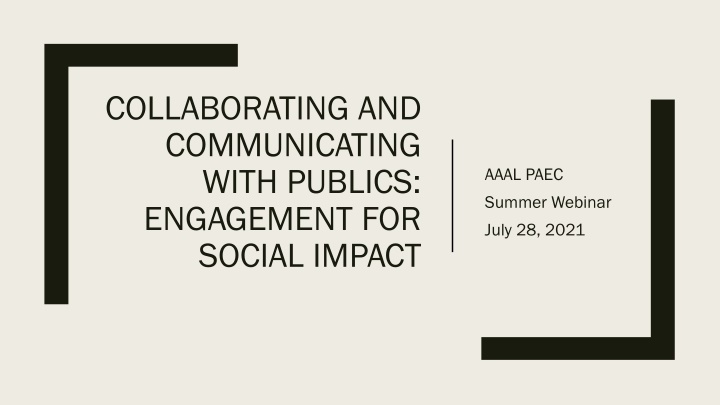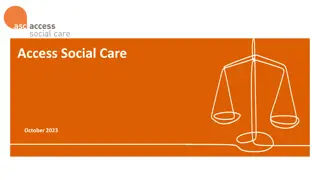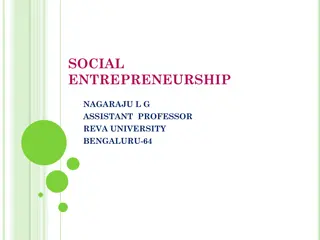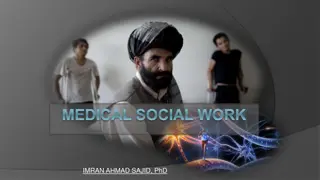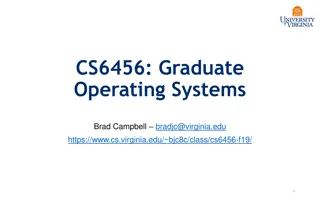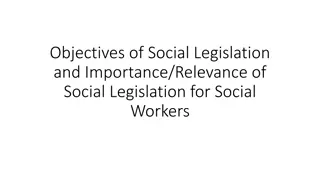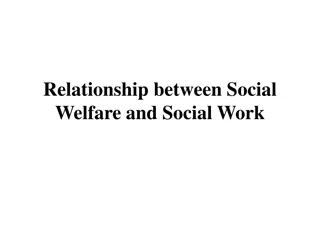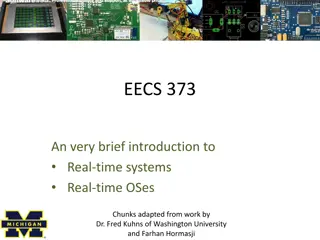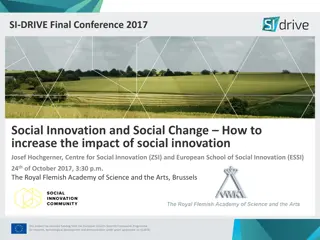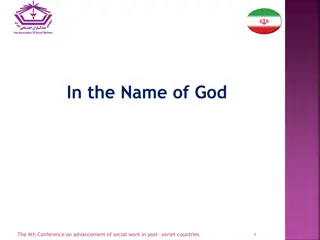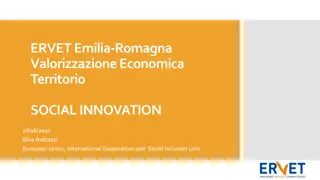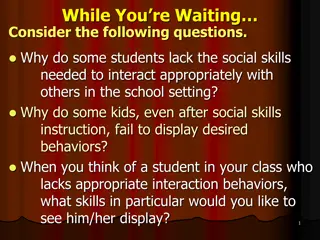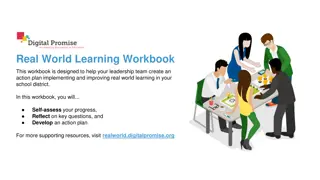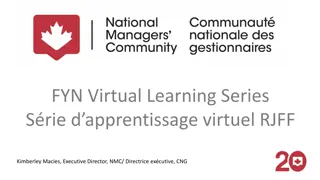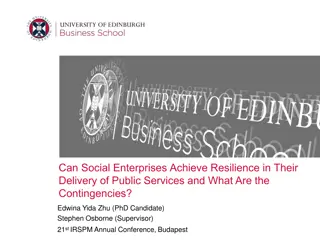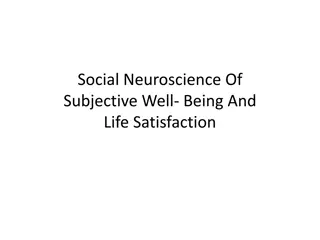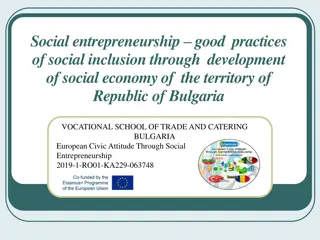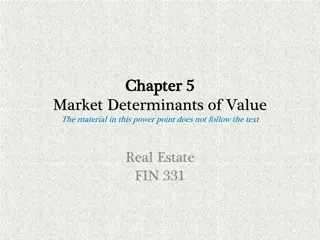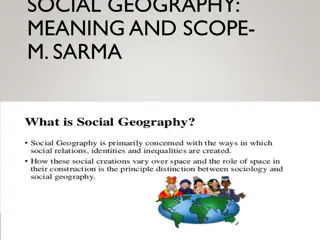Collaborating for Social Impact: Real-world Strategies and Challenges
Dive into the world of collaborating and communicating with publics for social impact in real-world settings. Explore successful approaches, common challenges, and effective strategies for meaningful projects designed collaboratively with diverse partners. Discover the importance of navigating unfamiliar territories and embracing the complexities of research and engagement processes to achieve impactful outcomes.
Download Presentation

Please find below an Image/Link to download the presentation.
The content on the website is provided AS IS for your information and personal use only. It may not be sold, licensed, or shared on other websites without obtaining consent from the author.If you encounter any issues during the download, it is possible that the publisher has removed the file from their server.
You are allowed to download the files provided on this website for personal or commercial use, subject to the condition that they are used lawfully. All files are the property of their respective owners.
The content on the website is provided AS IS for your information and personal use only. It may not be sold, licensed, or shared on other websites without obtaining consent from the author.
E N D
Presentation Transcript
COLLABORATING AND COMMUNICATING WITH PUBLICS: ENGAGEMENT FOR SOCIAL IMPACT AAAL PAEC Summer Webinar July 28, 2021
Meaningful projects designed & executed collaboratively with colleagues Diverse disciplines, non-academic institutions, local communities WEBINAR WEBINAR OVERVIEW OVERVIEW Communicating & collaborating with publics in real-world settings Successes, challenges, and strategies In-depth understanding, engagement, and impact 2
WEBINAR OVERVIEW WEBINAR OVERVIEW Overview/Introduction 2-minute Descriptions of Each Chapter Breakout Rooms (Guiding Questions) Large Group Discussion Wrap Up & Next Steps 3
: 4
Introductory/Overview Comments Introductory/Overview Comments (Doris S. Warriner & Elizabeth R. Miller) An explicit focus on language practice might facilitate understanding, engagement, and impact in real-world settings and in collaboration with members of local communities More energy and time should be devoted to clarifying, communicating, and collaboratively exploring the relevance of our scholarship to other disciplines and local communities analyzing the role of language in society contributes to socially embedded, cross- institutional, multi-sited, and/or collaborative research projects 5
So we decided (as a group) to Focus on how we have moved purposefully into spaces that we might initially find unfamiliar or even uncomfortable Explain the problem with expecting a seamless, smooth, and tension-free research- engagement process Show that this kind of work can often be logistically and emotionally demanding, with many twists, turns, and false starts Demystify the research process and work actively against presenting a sanitized accounts of research design, data collection, and data analysis 6
Authors considered these Guiding Questions: Guiding Questions: How did you build collaboration with others (e.g., in other disciplines and/or in local communities) while undertaking this project? Under what circumstances did language and/or literacy issues become important focus for the research context? How did you respond? What difficulties did you encounter as a language/linguistics researcher in working with non-linguists? and how did you address them? What can other applied linguistics/academics exploring the role of language, literacy, and/or communication in issues, problems, dilemmas of concern to the broader public learn from your approaches (methodological, theoretical, epistemological) to inquiry? 7
1. Engaging the public in sociolinguistics Engaging the public in sociolinguistics for social justice: advocating for pidgin for social justice: advocating for pidgin speakers in Hawai i speakers in Hawai i (Christina Higgins, University of Hawai i) student-produced documentary film about Pidgin museum exhibit about the development and contemporary use of Pidgin public conference on Pidgin and education, held at a local high school 8
2. Building partnerships and expanding repertoires of Building partnerships and expanding repertoires of practice: working with and in museums to improve informal practice: working with and in museums to improve informal science education for linguistically diverse children science education for linguistically diverse children (Leslie C. Moore) Callanan s advice on museum-university partnerships: find overlapping goals get to know the organization recognize museum staff as professionals recognize that your outsider status has both benefits and drawbacks give something back keep an open mind Betsy Rymes wonderful afterword Clinging to our institutional roles impedes collaborative public inquiry 9
3. An applied linguist at work: An applied linguist at work: tracing language choices in a social tracing language choices in a social sustainability network sustainability network (Elizabeth R. Miller) 10
4. Finding the answers within the Finding the answers within the story: the transformative potential story: the transformative potential of translanguaging praxis of translanguaging praxis (Obed Arango & Holly Link) 11
5. Being, seeing, and hearing white: Being, seeing, and hearing white: when theater arts interrogate and when theater arts interrogate and make visible the power of the make visible the power of the elephant in the room elephant in the room (Ellen Skilton) 12
6. Language as a social Language as a social determinant of health: Partnerships determinant of health: Partnerships for health equity for health equity (Emily Feuerherm, Rachel E. Showstack, Maricel G. Santos, Glenn A. Martinez & Holly E. Jacobson) 13
7. It depends case by case: It depends case by case : understanding how the practices of understanding how the practices of cultural health navigators impact cultural health navigators impact healthcare access and delivery for healthcare access and delivery for refugee refugee- -background families background families (Katherine E. Morelli & Doris S. Warriner) 14
8. Applied linguistic anthropology: balancing social science Applied linguistic anthropology: balancing social science with social change with social change (Netta Avineri, Eric J. Johnson, Bernard C. Perley, Jonathan Rosa & Ana Celia Zentella) Applied Linguistic Anthropology: Applied Linguistic Anthropology: Observation, Centering Language, Recognition of Positionalities, Collaboration, Raising Awareness 4 Case Studies (AAA Language & Social Justice Task Group) 4 Case Studies (AAA Language & Social Justice Task Group) Who is linguistically isolated ?: Challenging a damaging US Census Debating the language of migrant illegality migrant illegality : Connecting linguistic advocacy to broader struggles Mascot names Mascot names and the naturalization of public racism (Mis)understanding the 30 million word gap 30 million word gap Time, Scale, Audience, Positionality, Modality, and Impact Time, Scale, Audience, Positionality, Modality, and Impact US Census category 15
Afterword: Crossing Borders, Afterword: Crossing Borders, Rethinking Expertise, and Rethinking Expertise, and Becoming Becoming Collaborative Collaborative Linguists (Betsy (Betsy Rymes Rymes) ) Linguists 16
Breakout Rooms & Sharing Out Breakout Rooms & Sharing Out Chapter authors and webinar participants Q & A with the chapter author(s) General discussion/interaction Sharing highlights with the larger group 17
Guiding Questions for Breakout Rooms Guiding Questions for Breakout Rooms How have you collaborated communities)? collaborated with others (e.g., in other disciplines and/or in local Under what circumstances did language and/or literacy issues language and/or literacy issues become important focus for the research context? How did you respond? What difficulties difficulties have you encountered as a language/linguistics researcher while working with non-linguists? And how did you address address them? What can other applied linguistics/academics other applied linguistics/academics exploring the role of language, literacy, and/or communication in issues, problems, dilemmas of concern to the broader public learn from your experiences and approaches to inquiry your experiences and approaches to inquiry? 18
Whats Next? What s Next? Connect with one another Applied Linguistics & Social Justice listserv (300 members) Applied Linguistics Briefs (guidelines coming in August) Webinars Your ideas ! Contact paec@aaal.org https://www.aaal.org/volunteer 19
